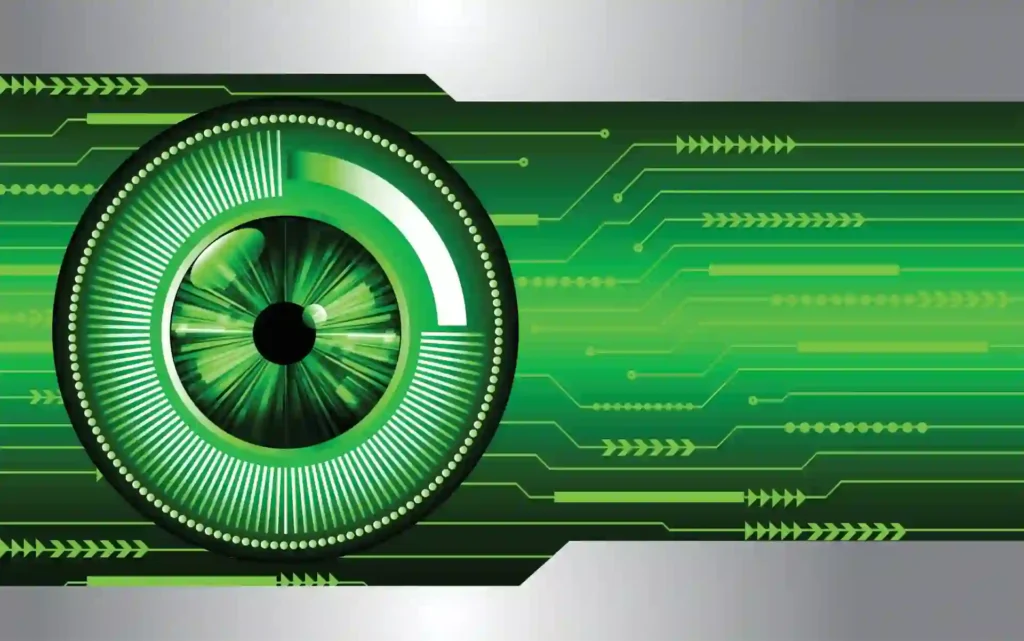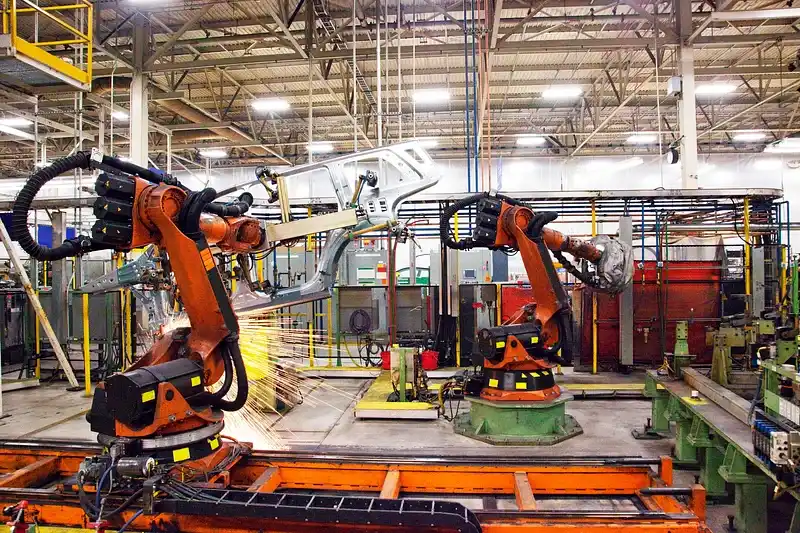Introduction
In the ever-evolving realm of manufacturing, machine vision inspection emerges as a game-changer. This article explores the imminent trends set to redefine quality control. From AI integration to 3D vision tech, these advancements promise a future of heightened precision and seamless integration into Industry 4.0. Join us as we unveil the transformative potential of machine vision in shaping the future of manufacturing.
Traditional Quality Control Challenges
Manual inspection processes are prone to limitations, with human errors and subjectivity leading to inconsistencies in identifying defects. The need for a more accurate and reliable solution has given rise to the emergence of machine vision inspection.
Emergence of Machine Vision Inspection
Machine vision inspection involves the use of cameras and sensors combined with sophisticated image processing algorithms to automate the inspection process. This technology has found its way into various manufacturing sectors, revolutionizing quality control.
Key Components of Machine Vision Systems
The success of machine vision inspection lies in its key components, such as high-resolution cameras and advanced sensors. These work in tandem with image processing algorithms that can analyze large datasets quickly and accurately.
Cameras
High-resolution cameras are the eyes of the machine vision system. They capture images of the objects or products being inspected with exceptional detail, providing the necessary visual data for analysis.
Sensors
Specialized sensors, such as infrared or ultraviolet sensors, complement cameras by capturing additional information beyond the visible spectrum. This expanded data range allows for more comprehensive inspections.
Illumination Systems
Proper lighting is crucial for obtaining clear and detailed images. Illumination systems are designed to highlight specific features of the objects under inspection, improving the accuracy of the analysis.
Lenses
Lenses play a vital role in focusing the captured light onto the camera’s sensor. Different lenses can be used to achieve various levels of magnification and depth of field, depending on the inspection requirements.
Image Processing Hardware
Dedicated hardware components, such as processors and GPUs (Graphics Processing Units), handle the computational load of image processing. They execute complex algorithms to analyze the captured images rapidly.
Benefits of Machine Vision Inspection
The adoption of machine vision inspection brings a myriad of benefits to the manufacturing industry. Improved accuracy and consistency in inspections lead to higher product quality, while increased production efficiency is achieved through faster and automated processes.
Improved Accuracy
Machine vision systems are capable of achieving a level of accuracy in inspections that surpasses human capabilities. This leads to more precise identification of defects and adherence to quality standards.
Consistency in Inspections
Unlike human inspectors, machine vision systems maintain consistent levels of attention and precision throughout the entire production process. This consistency is crucial for ensuring uniform product quality.
Increased Production Efficiency
Automation of the inspection process through machine vision leads to faster and more efficient operations. Rapid analysis of images allows for real-time decision-making, reducing bottlenecks in the manufacturing workflow.
Enhanced Speed of Inspection
Machine vision systems can analyze images at remarkable speeds, surpassing the capabilities of human vision. This quick analysis is especially beneficial in high-speed production environments where efficiency is paramount.
Cost Savings in the Long Run
While the initial investment in machine vision technology may be significant, the long-term cost savings are substantial. Reduced reliance on manual labor, minimized rework, and increased efficiency contribute to overall cost-effectiveness.
Early Detection of Defects
Machine vision systems excel in detecting subtle defects that may go unnoticed by human inspectors. Early identification allows manufacturers to address issues before they escalate, minimizing the impact on production.
Customizable Inspection Criteria
Machine vision inspection systems can be programmed with specific criteria tailored to the unique requirements of each manufacturing process. This customization ensures that inspections align with the desired quality standards.
Data Logging and Traceability
Machine vision systems generate vast amounts of data during inspections. This data can be logged and stored, providing manufacturers with valuable insights for quality improvement, process optimization, and traceability.
Applications in Manufacturing
Machine vision inspection finds applications in defect detection, classification, and dimensional accuracy checks. Its ability to identify subtle defects that may be overlooked by human inspectors makes it an invaluable tool in maintaining high-quality standards.
Implementation Challenges
Despite its advantages, implementing machine vision inspection systems can pose challenges. Initial setup costs and the need for personnel training are among the hurdles that manufacturers may face.
Overcoming Challenges
However, the long-term cost savings and continuous advancements in technology make the initial investment worthwhile. As machine vision systems become more user-friendly, the barriers to entry are gradually diminishing.
Future Trends in Machine Vision Inspection
Looking ahead, the integration of artificial intelligence into machine vision systems is expected to enhance their functionalities. This includes improved defect recognition and decision-making capabilities, further elevating the effectiveness of quality control measures.
Integration of Artificial Intelligence (AI)
The incorporation of AI into machine vision systems will play a pivotal role in enhancing their capabilities. AI algorithms will enable more sophisticated defect recognition, decision-making, and adaptability to dynamic manufacturing environments.
Advanced Deep Learning Techniques
Deep learning, a subset of machine learning, will see increased use in machine vision inspection. These advanced techniques will allow systems to learn and adapt based on experience, improving their ability to recognize complex patterns and anomalies.
Edge Computing for Real-time Processing
The adoption of edge computing in machine vision systems will facilitate real-time data processing at the source, reducing latency and enabling faster decision-making on the production floor. This trend aligns with the demand for immediate insights and responses.
3D Vision Technology
The integration of 3D vision technology will become more prevalent. This enables machine vision systems to assess not only the surface characteristics but also the spatial dimensions of objects, enhancing accuracy in quality control.
Hyperspectral Imaging for Enhanced Analysis
Hyperspectral imaging, which captures information across a wide spectrum of wavelengths, will be increasingly employed. This technology allows for more detailed analysis of materials, improving the detection of defects and variations in product composition.
Multi-sensor Fusion
Combining data from multiple sensors, such as cameras and infrared sensors, will become more common. Multi-sensor fusion enhances the overall understanding of the inspected objects, providing a more comprehensive analysis.
Human-Centric Machine Vision
Future machine vision systems will focus on creating a more intuitive interaction with human operators. User interfaces will be designed to be user-friendly, allowing operators to easily configure, monitor, and interpret results.
Real-time Augmented Reality (AR) Feedback
AR will be integrated into machine vision systems to provide real-time feedback to operators. This can include overlaying information on the production line or displaying guidance for manual interventions, enhancing the human-machine collaboration aspect.
Consideration for Small and Medium Enterprises (SMEs)
Scalability and affordability are critical considerations for SMEs looking to adopt machine vision inspection. Tailored solutions for different industries ensure that even smaller manufacturers can benefit from this technology.
Industry Adoption and Success Stories
Several leading companies have embraced machine vision inspection, leading to recognition in their respective markets. The positive impact on quality control has translated into enhanced brand reputation and customer satisfaction.
Human-Machine Collaboration
Machine vision inspection does not replace human expertise but complements it. The collaboration between humans and machines creates a synergy that allows for more thorough and efficient quality control processes.
Challenges for Wider Adoption
Despite its potential, there may be resistance to change and skepticism surrounding the reliability of machine vision inspection. Addressing these concerns through education and awareness is crucial for wider industry adoption.
Conclusion
In conclusion, machine vision inspection is a game-changer in improving quality control in manufacturing. The combination of advanced technology, real-world success stories, and the potential for human-machine collaboration makes it a vital tool for ensuring product quality and competitiveness. For further inquiries or a demo, you can Contact Trident Information Systems. Stay ahead of the innovation curve! Follow our LinkedIn page for the latest insights and updates on how Vision Intelligence System are revolutionizing The industry.
FAQs
- Is machine vision inspection suitable for all types of manufacturing?
- Machine vision inspection can be adapted to various manufacturing processes, but customization may be required based on specific industry needs.
- How do machine vision systems handle changes in product specifications?
- Machine vision systems can be programmed to adapt to changes in product specifications, ensuring flexibility in the manufacturing process.
- What are the primary considerations for SMEs looking to implement machine vision inspection?
- SMEs should consider scalability, affordability, and industry-specific solutions when adopting machine vision inspection.
- Can machine vision inspection completely replace human inspectors?
- No, machine vision inspection is designed to complement human expertise, enhancing the overall quality control process.
- How can manufacturers address skepticism among employees regarding the adoption of machine vision systems?
- Employee education and training programs can help alleviate skepticism by demonstrating the benefits and reliability of machine vision inspection.



